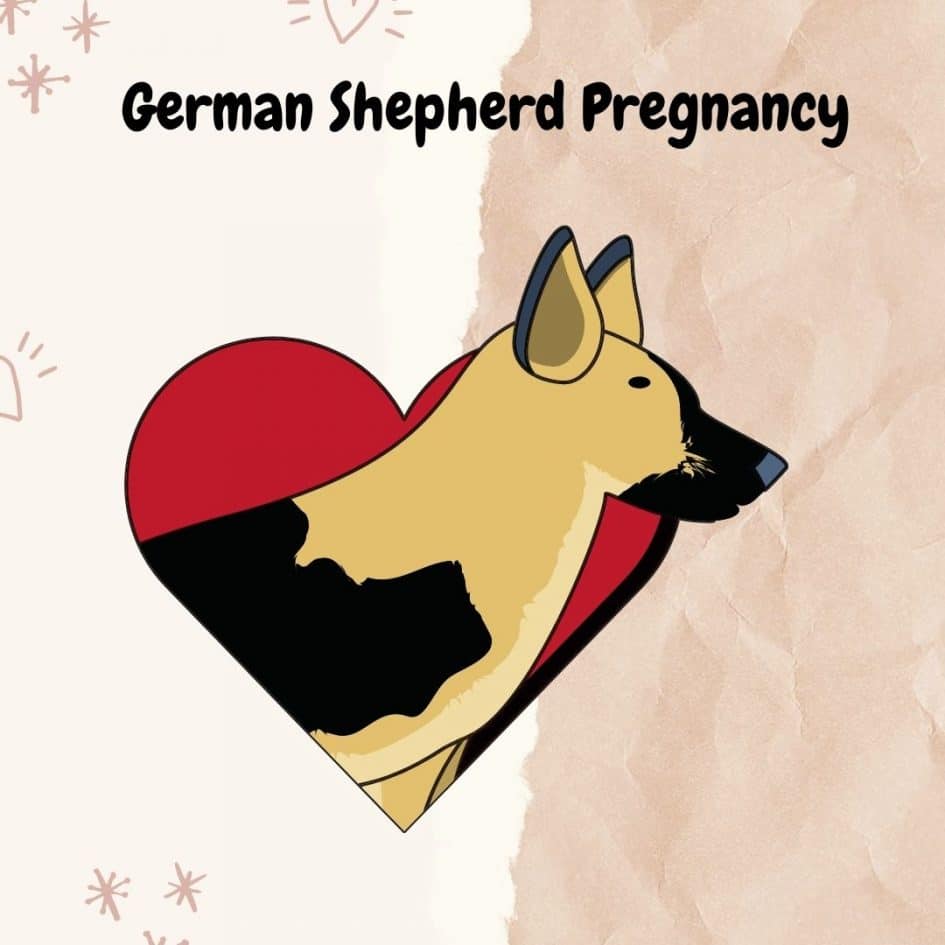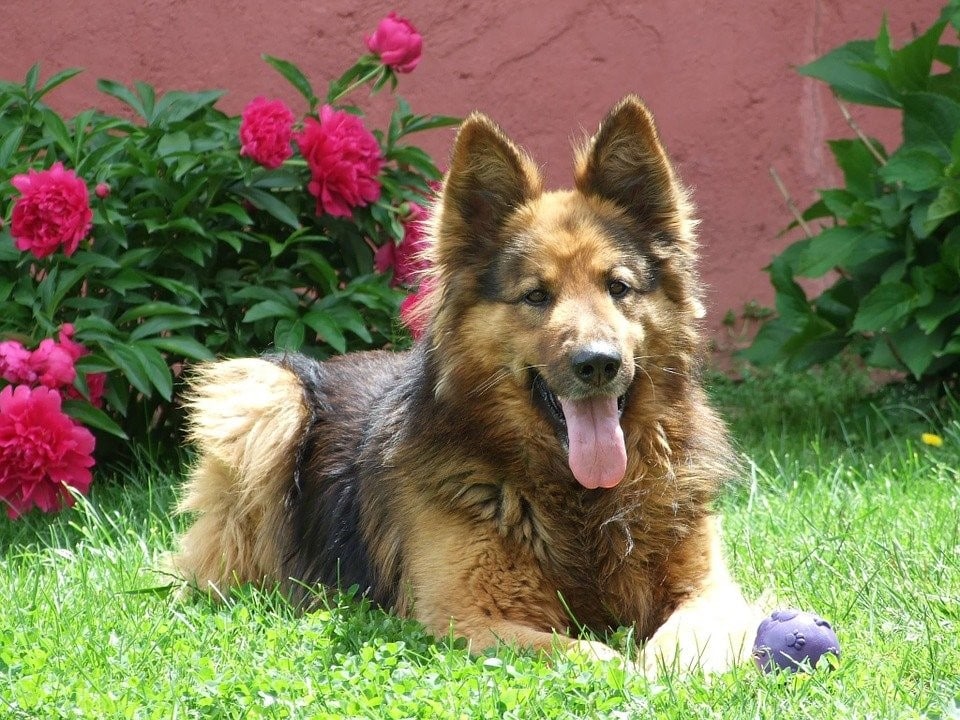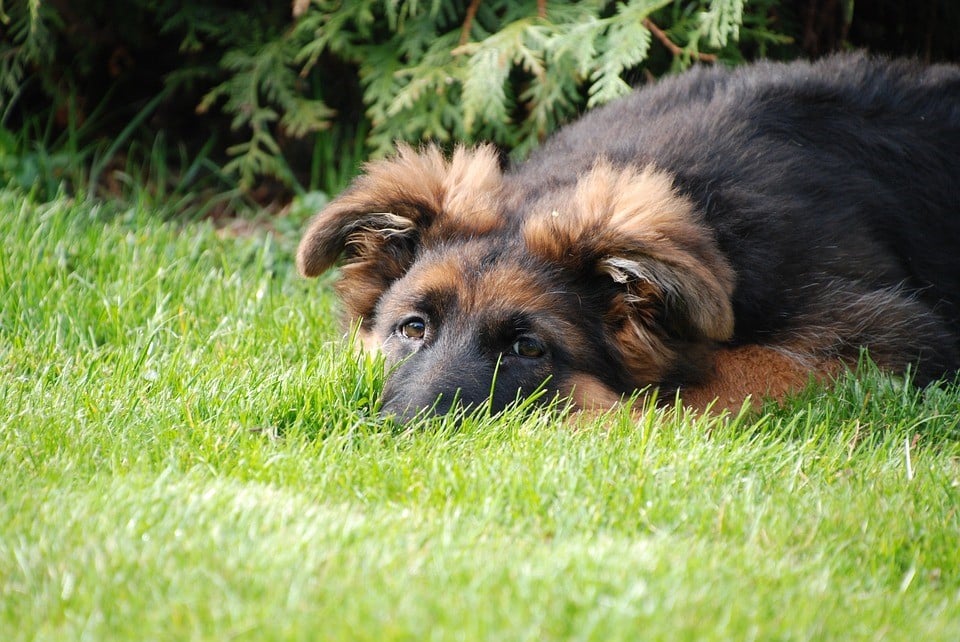

German Shepherd Pregnancy: All You Need to Know
This blog post covers everything you need to know about German Shepherd pregnancy, from when the dog breed gets pregnant to how long it remains pregnant to how many babies a German Shepherd can produce at one time, and so much more!
German Shepherds are one of the most popular dog breeds in the world. Today, they are purchased as well as adopted as hunting dogs, service dogs, police dogs, and pets, of course. Though German Shepherds are low maintenance in the grooming department, they still require special attention, especially if they are pregnant.
The thought of having German Shepherd puppies may catch you off guard, but if you are well prepared and informed about German Shepherd pregnancy, you can easily take care of your pregnant dog during a time when it may need your help the most. So, without any further ado, let’s fill you in with everything there’s to know about German Shepherd pregnancy.
1. When Can German Shepherds Get Pregnant?
Female German Shepherds get closer to being pregnant when they experience their first heat cycle, which varies from breed to breed. Usually, larger breeds of German Shepherds experience their first heat when they are 9 – 12 months old, while smaller breeds can have their first heat as early as 6 months from their birth.
During a heat cycle, your German Shepherd will be in pain, so naturally, she may not eat much or be as active as before. Since your dog will be bleeding, she may act moody or aggressive at times. During this stage, you should be gentle with your precious pet and let her be. No matter when your German Shepherd has her first heat cycle, she won’t be ready to breed until she is about two years old.
2. How Long Is A German Shepherd Pregnant?
The standard length of a German Shepherd’s pregnancy is approximately 63 days. German Shepherds tend to be a larger breed because of which their pregnancy can be slightly longer than smaller breeds.
To accurately estimate your German Shepherd’s pregnancy, you will need to monitor your pet’s pregnancy very closely, ideally from the time of her first heat cycle to how many times she experiences the heat period. Make sure to record the time and date so that you can track the time your pet conceived a pup. You will note that your German Shepherd’s due date numbers up to around 63 days from their gestation period.
3. How Many Babies Do German Shepherds Produce?
Generally, German Shepherds can have up to 8 puppies. However, some larger females can produce about 15 litter. All in all, the number of GSD litter depends on the pet’s breed and health. A less healthy and small breed tends to have fewer than 8 babies.
Note that the overall health of the pregnant German Shepherd can have an impact on her puppies. For instance, a female German Shepherd tends to have a moderate or large litter if she is given a rich and nutritious diet combined with daily exercises and regular vet checkups. Other than that, the father of the litter also plays a key role in the overall health of his pups. For example, a male German Shepherd with a lower sperm count is less likely to produce more puppies.
4. How to Tell If Your German Shepherd Is Pregnant?
German Shepherds are good at enduring and hiding their pain, so even if they are experiencing the heat cycle, they may not outwardly show it. Due to this reason, it can be hard to keep track of the gestation period and pregnancy of your German Shepherd.
Having said that, you can still tell your GSD is pregnant if you look for the following signs and symptoms:
4.1 Increased Appetite
Changes in appetite are one of the common signs that your German Shepherd is pregnant. Your pregnant GSD is likely to eat more than a normal GSD. As a result, your German Shepherd will gain a lot of weight – ideally, between 20% to 50%. While this may seem like a whole lot of weight, but don’t worry, your pet will shed extra pounds after her gestation period is over.
4.2 Frequent Urination
German shepherds start to urinate a lot more when they are pregnant. By doing so, they also mark their territories where they like to be perched and not be disturbed by anyone. You will rarely find female German Shepherds marking their territory around your personal space – the sofa, bed, etc.
4.3 Physical Changes
Halfway into pregnancy, you will start to notice physical changes in your German Shepherd. She will grow bigger in size with her stomach and nipples larger than ever before. Plus, the nipples will be darker, too. You may also notice thinning out of hair around the stomach of your German Shepherd as she enters the second half of the pregnancy. However, you shouldn’t worry about the loss of hair as it is a natural change that almost every female GSD experiences during her pregnancy.
4.4 Behavioral Changes
Along with physical changes, your female German Shepherd may also experience changes in her temperament and personality. For example, your pet may suffer from morning sickness and lethargy, and thus, be less energetic, playful, and may prefer to be left on her own. She may not enjoy jumping, running, playing, or socializing with others. You will also find your GSD sleeping and eating a lot.
On top of it all, your pet may also get moody and hostile if disturbed. If you spot these signs in your female German Shepherd, you shouldn’t worry at all. A quick visit to a nearby vet may confirm the fact your pet is pregnant.

5. What Are Various German Shepherd Pregnancy Stages?
A female German Shepherd goes through different pregnancy stages during which they show several signs of dog pregnancy (as discussed above).
Let’s look at the 63-day long German Shepherd pregnancy in four stages:
5.1 Stage 1: Proestrus
This is the initial stage of the heat cycle of a female German Shepherd dog that lasts for around 9 days. At this stage, the female dog attracts the male gaze but shows no interest in his advances for mating. During Proestrus, the vulva of the female dog swells up, and blood may discharge from her body. Male dogs will start to crowd around her, but the female counterpart will reject him in heat.
5.2 Stage 2: Estrus
This is the second stage of the heat cycle that lasts for about 3 -4 days. In some cases, it can last longer for up to 7 – 11 days.
This stage is also known as the “flagging stage” because, during this period, the red vaginal discharge gets lighter. You may also observe your female pet rubbing her backside against objects – table, sofa, etc. This means your GSD is ready to mate, and thus, she will be approachable for mating, unlike in the earlier stage.
This is also the stage where mature eggs are released from your GSD’s ovary.
5.3 Stage 3: Metestrus
This is the stage where your female GSD gets pregnant. There aren’t many signs to tell your dog is pregnant at this stage. The only apparent signs are an enlarged abdomen and morning sickness. Over time, by the third or fourth week of the pregnancy, you will be able to see all the major physical and behavioral changes in your pregnant dog. By the end of the first month, your pet will start vomiting regularly. However, this will pass soon enough.
In case your female GSD doesn’t conceive, she will revert back to the final stage, which is:
5.4 Stage 4: Anestrus
Anestrus is the period between one heat cycle and the next. This stage usually lasts for almost 6 months, during which the female GSD prepares herself for the heat cycle again.
During this stage, you may see no signs of growth or development of any reproductive organ in your female German Shepherd.
To better understand your German Shepherd pregnancy, we have divided her pregnancy stages into weeks:
5.4.1 1st Week
This marks the beginning of your GSD’s pregnancy. At this point, the eggs are fertilized, and the reproductive system is ready for pregnancy.
5.4.2 2nd Week
In the second week, the fertilized eggs attach themselves to the endometrium – the lining of the uterus.
5.4.3 3rd Week
During this week, you will observe some changes in your GSD, such as changes in the abdomen size, nipple size and color, weight gain, and so on.
5.4.4 4th Week
At this point, your female German Shepherd will be seen vomiting every morning.
5.4.5 5th Week
As the second month rolls in, the fetus begins to develop at a faster rate. You will also be able to listen to the heartbeat of the litter using a quality stethoscope.
5.4.6 6th Week
During the sixth week the appetite of your female dog increases drastically by 20 – 50% of weight gain as a result.
5.4.7 7th Week
The behavioral changes in your pet become more intense. The abdomen gets large and firm, and the vaginal discharge becomes colorless.
5.4.8 8th Week
As the second month ends, your female pet won’t feel as hungry as before. The nipples will grow abnormally large, and the movement of puppies in the abdomen will be visible.
5.4.9 9th Week
This is the last week of pregnancy, where the puppies are fully formed and start to move toward the birth canal. Your GSD, at this point, will become super restless and will seek a safe spot for nesting.

6. How Can You Take Care of a Pregnant German Shepherd?
Knowing your German Shepherd is pregnant may either overwhelm you or excite you; in any case, you should take good care of your needy pet.
Here’s a complete guide on how to look after your pregnant German Shepherd:
6.1 Provide Proper Nutrition
One of the most important things you can do for your pregnant German Shepherd is to supply her with nutritious food every day. For that, you will need to stock up on excellent-quality foods and treats. However, if your pet is already on a good diet, you won’t need to make any necessary changes to your dog’s diet – unless the veterinarian wants you to do otherwise.
According to the American Kennel Club, just as your GCD’s appetite increases, especially in the last five weeks of her pregnancy, you should increase her food intake. However, do this gradually until your pet starts to consume 35% – 50% of more food than usual. Feed her small meals frequently rather than large meals at once.
6.2 Consider Regular Vet Visits
Daily veterinary visits are crucial for your female GCD to stay fit and healthy during her pregnancy. Your first visit to the vet will be to confirm her pregnancy. Your vet will check your dog for any signs of illness or discomfort and warn you if any. This is also a good time to discuss your pet’s regular food intake, precautions to consider, steps to take during emergencies, scheduling the next appointment, etc.
6.3 Give Your Pet Space
Another crucial tip to consider when looking after your pregnant German Shepherd is to give her room to be herself. If she is not in the mood to play or eat, don’t force her. It’s natural for pregnant dogs to behave oddly, but don’t worry, it’s just a phase that every pregnant dog goes through.
6.4 Set Up a Whelping Box
As your female GSD gets closer to her due date, make sure you have built a safe and comfy whelping box. A whelping box is necessary to help your pregnant dog deliver her litter in a clean and secure location. Ideally, you should set up a whelping box away from other pets and people. It should be located in a quieter place where your pet can give birth to the pups in privacy.
Once you built or purchase a whelping box, ensure your German Shepherd gets accustomed to the new space. If you don’t familiarize your dog with the whelping box in advance, your pet may decide to deliver her pups somewhere else – probably your closet.
6.4.1 Whelp Box Supply Checklist
When setting up a secure whelping box for your German Shepherd, make sure to include all of the following things inside it:
- Newspaper or sheets to line the whelping box so that your pet gives birth to pups without causing any mess.
- Non-slip bath mats for clean bedding after whelping is over
- Dry and clean paper towels to clean the litter.
- Unused dental floss to tie an umbilical cord.
- Thermometer to check and control your pet’s body temperature during her labor.
- Clean and sharp scissors to cut the navel string during the delivery.
- A warm water bottle or heating pad to keep the pups comfy. Make sure it’s not too hot.
- A toddler’s scale to check the weight of the litter.
- A bottle of iodine to clean the pups.
7. Why Do German Shepherd Dogs Nest During Pregnancy?
Female German Shepherd dogs nest when they enter the last stage of pregnancy. They nest to prepare for the arrival of their litter in the safest way possible.
In nesting behavior, your female GSD will constantly lick herself in anticipation of her pups. Don’t panic if your pet excessively grooms herself – it’s totally normal. Prior to labor, your GSD may also feel super anxious and uneasy. She will seek out privacy, and in an attempt to do so, she will tear newspapers, rip blankets apart, or finds a safe corner to create a nest for her pups.
Some GSD breeds will even put toys around as a way of creating and protecting their nest for their babies. It’s your duty to ensure your pregnant GSD receives a safe nest. No doubt, a whelping box makes for a great nest for pregnant dogs.
Note that nesting behavior in German Shepherds begins days before giving birth. According to professional veterinarians, pregnant dogs start nesting 9 to 10 days before delivering pups.
8. How Long Does It Take for a Female German Shepherd to Give Birth?
In general, it takes a few hours for female German Shepherds to give birth to their litter. However, if the time interval of the birth of the pups is delayed, we recommend you to contact your vet immediately. The delay can be because of the incorrect fetus position. In this case, your pet may need a cesarean section.
9. End Note
Newborn German Shepherds are adorable, to say the least. Upon birth, they appear in a black, grey, or brown color, but as they grow up, they become lighter in color. German Shepherds are caring and loving as parents. However, in a few rare cases, these dog breeds may eat their own litter if they fail to identify them as their own. German Shepherds usually reach their natural adulthood between 1 ½ – 2 years. During this while, you will find your German Shepherd to be super protective and gentle with their newborns.
Discover how to create a joyful, healthy home for your pet.
Subscribe to your weekly rundown of practice, real life ideas and training tips straight to your inbox.



